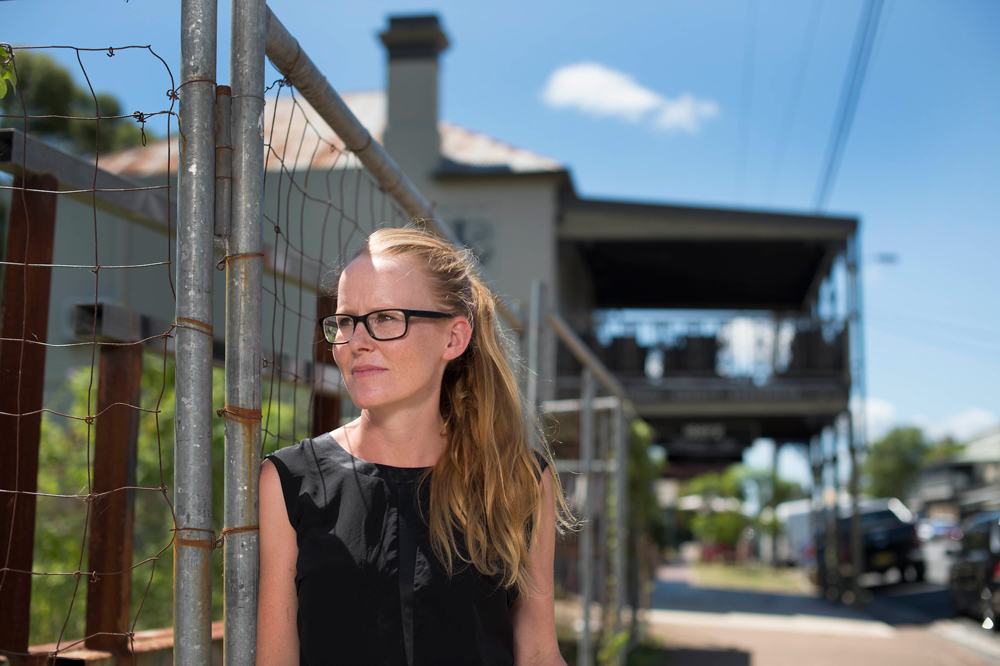Researcher Highlights
Hedda Askland is shining a light on displaced communities in our own backyards
Dr Hedda Askland
With stories of war and the impacts of global warming inundating our news, we are overwhelmed with media imagery of displaced communities in developing countries – their homes shattered and futures unclear. But what about displaced communities in developed countries like Australia?

Dr Hedda Askland, an anthropologist and member of the University of Newcastle’s Centre for Social Research and Regional Futures (CSRRF), examines the deep-rooted forces behind home, identity and belonging amongst people experiencing significant social, political and environmental change. Through her research with exile and refugee communities, as well as communities exposed to large-scale development projects, she has found we don’t have to look past our own backyards to find people suffering experiences of displacement.
“In contrast to my previous work with East Timorese living in Australia during a time of political upheaval, I currently work with local, long-established communities in Australia that co-exist with large scale industry. This project looks at people we don’t normally think of as refugees or migrants because they don’t travel across borders – some of them don’t even leave their house,” Askland said.
“…this project is looking at people we don’t normally think of as refugees or migrants because they don’t travel across borders – some of them don’t even leave their house”
Askland is currently conducting an ethnographic study in the Upper Hunter and Mid-Western regions, in which she explores people’s connection to place, their lived experiences of environmental and social change in the context of development, and the possibilities of environmentally-induced relief through movement and migration. At the moment she is working on a case study in the village of Wollar – a historic village on the edge of the Great Dividing Range that is surrounded by three open-cut coalmines.
Prior to the mining boom, Wollar was a community of about 400 people. There was a shop that sold everything from food to farming supplies, two churches, a local bushfire brigade, a mechanic, a nursery and a school. Today, only about 10 percent of the population remain, the nursery is relocating, there are only eight children left in the school and the shop is owned by mining company Peabody Energy – selling only expensive essentials. The closest town, Mudgee, is 50km away and Askland estimates the average age of residents is approximately 60 years old.
“When I speak with people in Wollar, they exhibit a real sense of distress that is connected to the future, especially in relation to the planned expansion of the mine, which will move the mine boundary to only 1.5km from the village,” Askland said.
“This is when I realised we needed to expand the current concepts we have for explaining displacement to something that is about people’s lived experiences and incorporates their imagined futures.”
As a result Askland is developing a concept she has termed ‘eritalgia’, which will assist in better understanding the role the future plays in the lived experiences of social and environmental change.
“The concept adds to the existing concepts ‘nostalgia’, which describes people’s connection to place in the past, and ‘solastalgia’, a term developed by Professor Glenn Albrecht to describe place-based melancholia, trauma or distress in the present. In contrast to these concepts, ‘eritalgia’ points to the embodied sense of displacement that may occur when there is a rupture between lived realities and imagined emplaced self,” Askland explains.
“I believe our understanding of place-based stress and relief must be expanded to incorporate people’s imagined futures, and that by creating a triadic concept such as this we can better understand displacement as an existential condition of loss, as it manifests in relation to the past, the present and the future”.
“By unpacking displacement in the context of what is happening in regional New South Wales, I will challenge conventional ways of understanding and speaking about displacement and relocation. Looking at the loss of community, questions of social cohesion, and individual sense of self as it is happening in Wollar, I am able to explore the question of home as it relates to place and mobility,” Askland explains.
“Not home as a physical place but home as a space in which our sense of self, physical landscape and social landscape are in harmony.”
“When this is aligned, people articulate a sense of home. This project will expand how we understand emplaced and existential loss, and connect it to both spatial and temporal dimensions. It will create an evidence base and theoretical framework for showing the significance of this issue, add to our understanding of the impacts development projects may have on communities and individuals, and show how mobility and migration might both cause and relieve environmentally-induced stress.”
“I hope that through this research I am able to initiate a public debate and awareness about how displacement as an experiential condition is not restricted to refugees and other migrants, but in fact can occur in our own backyard.”
The University of Newcastle acknowledges the traditional custodians of the lands within our footprint areas: Awabakal, Darkinjung, Biripai, Worimi, Wonnarua, and Eora Nations. We also pay respect to the wisdom of our Elders past and present.
